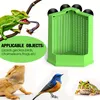As a water turtle aquarium consumer, it’s essential to ensure that your aquatic pets are living in a healthy environment. This article covers five key areas of turtle care: water quality, temperature control, nutrition, habitat design, and health checkups. Firstly, maintaining healthy water quality is crucial for the well-being of your turtles, and tips on achieving this include using filtration systems, performing regular water changes, and testing the water regularly. Secondly, a consistent temperature range is vital, and advice on heating equipment and ideal temperature range is provided. Thirdly, a balanced diet is necessary for your turtles, and feeding frequency, recommended food types, and supplementation are discussed. Fourthly, ample space and habitat design features like basking areas, hiding places, and water depth are essential. Lastly, regular health checkups and finding reputable veterinarians who specialize in exotic animals are advised.








Water Quality
Water quality is one of the most important factors to consider when keeping water turtles as pets. It plays a vital role in their overall health and well-being, as poor water quality can lead to numerous health problems and even death.
Maintaining healthy water quality requires diligence and dedication. Below are tips on how to achieve this:
1. Filtration Systems:
One of the most effective ways to maintain good water quality is by using a filtration system. A good filter will remove debris, excess food, and waste products from the water, keeping it clean and clear. There are several types of filters available for water turtle aquariums, such as canister filters, hang-on-back filters, and internal filters. Each type has its own strengths and weaknesses, so it’s essential to research which one is the best fit for your tank.
2. Water Changes:
Performing regular water changes is crucial to keeping the water quality in check. Changing 25% of the water every two weeks is recommended, but this may vary depending on the size of the aquarium and the number of turtles. During water changes, it’s essential to siphon out any uneaten food, feces, and other debris that may have accumulated at the bottom of the tank. This will prevent the build-up of harmful bacteria and ensure that the water remains pristine.
3. Regular Water Testing:
Regular testing of the water parameters is another key aspect of maintaining healthy water quality. Water testing kits can be purchased online or at pet stores and allow you to measure pH, ammonia, nitrite, and nitrate levels in the water. These parameters should be monitored regularly, with tests performed weekly in established tanks and more frequently in newer ones.
It’s essential to remember that turtles’ excrement produces ammonia, which, if left unchecked, can accumulate and become toxic to the animals living in the aquarium. High levels of ammonia can cause irritation to the eyes, gills, and skin of turtles, making them more susceptible to infections and diseases. Nitrites and nitrates are also harmful to turtles, so monitoring these levels is crucial.
Temperature Control
Maintaining a consistent temperature in a water turtle aquarium is crucial to the health and well-being of these reptiles. Turtles are cold-blooded animals, which means they cannot regulate their own body temperature. Therefore, it is up to the owner to provide an environment that allows them to thrive.
The ideal temperature range for most water turtles is between 75-85 degrees Fahrenheit. This temperature range provides them with the warmth they need to digest food properly, grow at a healthy rate, and remain active and alert. If the temperature drops below this range, turtles become sluggish, stop eating, and can develop respiratory infections. On the other hand, if the temperature rises above the recommended range, turtles may become stressed, dehydrated, and even die from heatstroke.
To maintain a consistent temperature in a water turtle aquarium, there are several things that owners can do. The first thing they should invest in is a reliable thermometer to monitor the water temperature constantly. A digital thermometer is easy to read and provides accurate readings. It is essential to check the temperature regularly, especially during the winter months when the room temperature tends to fluctuate.
Another way to control the temperature is by using a submersible heater. These heaters are designed to heat the water evenly, maintaining a consistent temperature throughout the entire tank. When purchasing a heater, owners should ensure that it is the correct size for the tank and that it has a built-in thermostat to prevent overheating.
Owners can also use a basking lamp to provide turtles with a warm spot to sunbathe. Basking lamps emit UVA and UVB rays, which stimulate vitamin D production, essential for healthy shell growth and overall well-being. The basking spot should be located in a designated area away from the heater and filter to prevent any damage or disturbance to the equipment.
In addition to heating equipment, owners can control the temperature by adjusting the location of the tank. Placing the tank in a room with a stable temperature, away from windows, doors, and air conditioning units, can help maintain a consistent temperature. Owners should also avoid placing the tank near drafts or direct sunlight.
Nutrition
Feeding frequency plays an important role in maintaining a healthy diet for your water turtle. Adult turtles should be fed once every day or every other day while young ones require more frequent feedings. However, it’s essential to avoid overfeeding as this can lead to obesity and other health problems.
When it comes to food types, a balanced diet should consist of both animal and plant-based foods. Commercial pellets specifically formulated for water turtles are a great source of nutrition and should make up the bulk of their diet. These pellets provide essential vitamins and minerals that may be lacking in other food sources. Supplementing commercial pellets with fresh vegetables like leafy greens, carrots, and squash can offer variety and additional nutrients.
It’s important to note that some foods should be avoided as they can be harmful or even toxic to turtles. Common household foods like bread, cheese, and meat should be avoided as they lack the necessary nutrients and can cause digestive issues. Additionally, wild-caught insects and fish should be avoided as they can carry parasites and diseases.
Supplementation can also play a role in maintaining a healthy diet. Calcium supplements are essential for the proper development of the shell and bones. Turtles can also benefit from vitamin supplements to ensure they’re receiving all necessary nutrients.
Habitat Design
Basking areas are crucial for turtles as they require heat to regulate their body temperature. Providing a basking area allows your turtle to absorb heat and UV rays, which helps with shell growth and metabolism. The basking area should be located above the waterline to prevent dampness and should be heated using a basking lamp or other heating sources. Additionally, it should be large enough for your turtle to rest comfortably.
Hiding places are also important in a turtle’s habitat as they provide a sense of security and privacy. Turtles love to hide, and this behavior is necessary for their psychological well-being. You can create hiding places by adding rocks, plants, and caves to your aquarium. These hiding places should be accessible and spacious enough for your turtle to enter and exit comfortably.
Water depth is another essential factor to consider when designing your turtle’s habitat. The water depth should be deep enough to allow your turtle to swim freely but shallow enough to enable them to reach the surface quickly for air. A general rule of thumb is to have the water level at least 1.5 times the length of your turtle. Additionally, proper filtration and water quality maintenance should be ensured to keep the habitat clean and healthy for your turtle.
Lastly, providing ample space for your turtle to move around and exercise is crucial for their physical and mental health. Turtles require a lot of swimming space to maintain their muscles and stay active. A good rule of thumb is to have ten gallons of water per inch of shell length. This ensures that your turtle has enough space to move around and explore their environment.
Health Checkups
Firstly, let’s talk about why health checkups are so important for your water turtle. Just like any other pet, turtles require routine medical care to maintain their health and wellbeing. Regular checkups can detect any potential problems early on, which makes it easier to treat and manage them. Additionally, a veterinarian can provide advice regarding proper nutrition, habitat conditions, and general care for your turtle.
Now, let’s discuss common signs of illness or injury to watch out for in your water turtle. These include lethargy, loss of appetite, unusual behavior, changes in appearance or skin condition, and respiratory distress. It is important to keep an eye out for these symptoms as they may indicate a more serious underlying issue. If you notice any of these signs, it is crucial to seek veterinary attention as soon as possible.
When it comes to finding a veterinarian who specializes in exotic animals, it is important to do your research. Not all veterinarians are equipped to deal with the specific needs of water turtles, so it’s essential to find someone who has experience with these types of pets. You can start by asking for recommendations from other turtle owners, researching online reviews, or contacting local exotic animal organizations.
In conclusion, regular health checkups for your water turtle are crucial for maintaining their overall health and detecting any potential problems early on. Keep an eye out for common signs of illness or injury, and don’t hesitate to seek veterinary attention if needed. By finding a reputable veterinarian who specializes in exotic animals, you can ensure that your turtle receives the best possible care. Remember, a healthy turtle is a happy turtle!
FAQ
Q1. Q: How often should I change the water in my turtle aquarium?
A: It is recommended to change the entire water in your turtle’s aquarium once a week. This helps to keep the water clean and healthy for your pet. However, you should also change the water as soon as you notice it becoming cloudy or dirty.
Q2. Q: Can I feed my water turtle anything other than commercial food pellets?
A: Yes, you can supplement your turtle’s diet with fresh vegetables such as kale, spinach, and carrots. You can also give them small amounts of cooked chicken or fish. However, avoid feeding them excessively as overfeeding can lead to health problems.
Q3. Q: Do I need a heater for my turtle’s aquarium?
A: Yes, turtles require a water temperature between 75-85 degrees Fahrenheit. A heater will help maintain a consistent temperature in the tank. Make sure to choose a heater that is appropriate for the size of your aquarium.
Q4. Q: How often should I clean the filters in my turtle’s aquarium?
A: It is recommended to clean the filters every two to four weeks. This will prevent debris from building up and keep the water clean and clear. Be sure to follow the manufacturer’s instructions when cleaning the filter.
Q5. Q: What kind of lighting does my turtle’s aquarium need?
A: Turtles require UVB lighting to properly absorb calcium and prevent metabolic bone disease. The light should be on for 10-12 hours a day and replaced every six months to ensure effectiveness. Additionally, turtles benefit from a basking lamp that provides warmth and a dry area to rest on.
